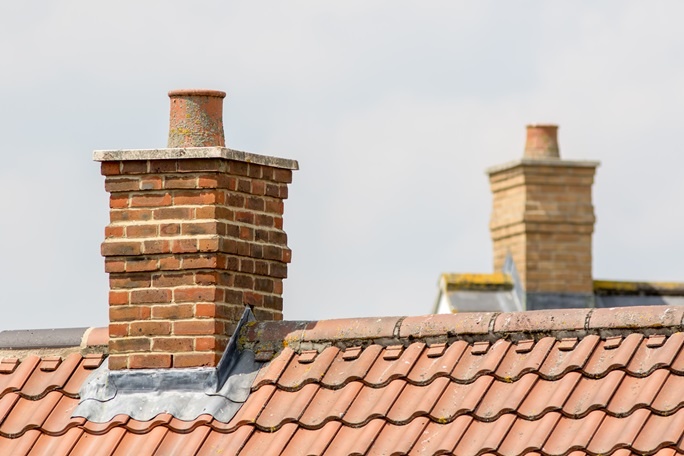Blog
TIME TO ADDRESS THOSE CHIMNEY LEAKS

Chimneys are not just functional elements of a home; they are also charming focal points that add character and warmth. However, a leaking chimney can quickly turn this source of comfort into a headache. From water damage to structural issues, chimney leaks can cause significant problems if left unaddressed. Fortunately, with proper diagnosis and timely repairs, you can restore your chimney to its former glory and safeguard your home against further damage.
Identifying the Source of the Leak
Before embarking on repairs, it's crucial to identify the root cause of the chimney leak. Common culprits include damaged flashing, cracked mortar joints, deteriorating chimney caps, and porous masonry. Conduct a thorough inspection both inside and outside the chimney to pinpoint any signs of water intrusion, such as water stains, mold growth, or dampness.
Repairing Damaged Flashing
Flashing serves as a protective barrier between the chimney and the roof, preventing water from seeping into the home. If the flashing is damaged or improperly installed, it can allow water to penetrate the chimney system. Repairing or replacing the flashing involves carefully removing the old flashing, inspecting for any underlying damage, and installing new flashing using weather-resistant materials like copper or aluminum.
Sealing Cracks and Gaps
Cracked mortar joints and gaps in the chimney masonry provide easy entry points for water. To address these issues, thoroughly clean the affected areas and apply a waterproof sealant or masonry caulk. Be sure to choose a product specifically designed for chimney repair and follow the manufacturer's instructions for proper application. Additionally, consider waterproofing the entire chimney with a breathable waterproofing agent to provide an extra layer of protection against moisture intrusion.
Replacing Damaged Chimney Caps
Chimney caps are essential for keeping out rain, snow, debris, and animals while allowing proper ventilation. If your chimney cap is damaged or missing, it can leave the chimney vulnerable to leaks and other problems. Replace the damaged cap with a new, properly sized chimney cap made of durable materials like stainless steel or copper. Ensure that the cap is securely attached to the chimney to prevent it from being dislodged by strong winds or wildlife.
Addressing Structural Issues
In some cases, chimney leaks may be caused by underlying structural issues, such as a deteriorating chimney crown or damaged chimney liner. These issues can compromise the integrity of the chimney system and pose safety hazards. Consult with a qualified chimney professional to assess the extent of the damage and determine the appropriate course of action. Depending on the severity of the problem, repairs may involve repairing or rebuilding the chimney crown, relining the chimney, or even rebuilding portions of the chimney structure.
Preventative Maintenance
Once you've addressed the chimney leak and made necessary repairs, it's important to implement regular preventative maintenance to keep your chimney in optimal condition. Schedule annual chimney inspections and cleanings by a certified chimney sweeper to detect and address any potential issues before they escalate. Additionally, monitor the condition of the chimney throughout the year and promptly address any signs of damage or deterioration.
A leaking chimney can pose serious risks to your home's structural integrity and your family's safety. By promptly identifying the source of the leak and implementing appropriate repairs, you can protect your chimney from further damage and ensure years of reliable performance. Remember to prioritise regular maintenance to keep your chimney in top condition and for years to come.
Back to articles





